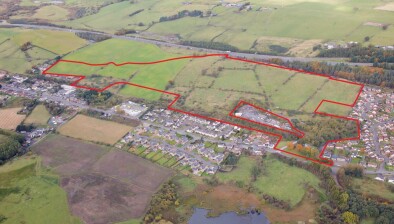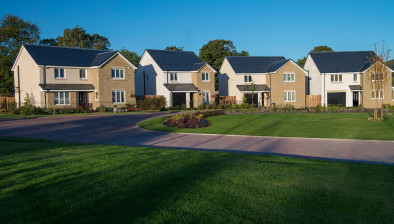New town signs up to biodiversity partnership to increase and protect wildlife
 A new £800 million residential project in Aberdeen is to become the first town development to sign up to the North East Scotland Biodiversity Partnership (NESBP).
A new £800 million residential project in Aberdeen is to become the first town development to sign up to the North East Scotland Biodiversity Partnership (NESBP).
Stewart Milne Group, the developer behind the 3,000-home Countesswells development, has joined forces with NESBP on several wildlife projects to protect existing wildlife and promote biodiversity within the 400-acre site.
With the aim of being one of the greenest and most attractive environments in which to live and work in North-east Scotland, Countesswells will be a new community containing thousands of new homes as well as an academy and two primary schools, community facilities, offices, formal and informal parkland, play parks and civic spaces.
Countesswells Development Limited (CDL), a wholly owned subsidiary of Stewart Milne Group, will work with NESBP on several initiatives to increase and protect wildlife in the town. Initial ideas include regular ‘BioBlitz’ events, with the community participating in recording wildlife over a fixed period and camera trapping with young people to film wildlife and learn about their movements and habits.
Ewen Cameron, chairman of the North-east Biodiversity Partnership’s Awareness & Involvement Group, said: “We were struck by the fact that open green space and woodland were an integral part of Countesswells from day one with a focus on actively encouraging wildlife. NESBP is not involved in the development planning process but we were impressed that CDL wanted to do environmental work that went above and beyond that required by planning conditions and obligations.
“Our role will be to work with CDL and the growing community at Countesswells to help them understand the wildlife they share space with and how they can care for and nurture that wildlife. This is the first time we have entered into such a collaboration with a developer at this scale and we are grateful to CDL and Stewart Milne Group for their forward-thinking in this regard.”
 Previously, environmental consultants Ironside Farrar were appointed by CDL to conduct a study into the biodiversity of Countesswells. The probe found that birds, bats, badgers and bugs of all shapes and sizes have burrowed and built nests throughout the many green spaces at the site.
Previously, environmental consultants Ironside Farrar were appointed by CDL to conduct a study into the biodiversity of Countesswells. The probe found that birds, bats, badgers and bugs of all shapes and sizes have burrowed and built nests throughout the many green spaces at the site.
In addition, red squirrels have been spotted in gardens in and around Countesswells, in line with a reversal in regional decline of these animals, recently announced by the Saving Scotland’s Red Squirrels partnership.
Allan McGregor, project director for Countesswells, said: “As the new £800m community to the west of Aberdeen is phased in, CDL will continue to channel resources into creating a haven for new and existing plants and wildlife.
“The new green spaces, waterways and parklands at Countesswells, which replaced the low grade agricultural land, have now joined Hazlehead Wood with Countesswells Woods to create a sprawling natural green landscape. Within this, we’ve been able to provide a natural forage route for amphibians, birds and insects. In addition, landscaping in the wider area includes vegetation species, which are attractive to badgers, such as crab apple, elder, gean, guelder rose, hawthorn, holly, dog rose and rowan.
“With people also making their home at Countesswells, we’re keen through this collaboration with the North-east Scotland Biodiversity Partnership, to demonstrate that living amongst and interacting with nature promotes a sense of well-being and is vital part of all modern communities.”









